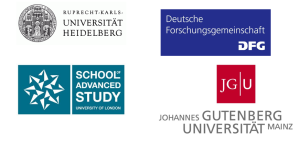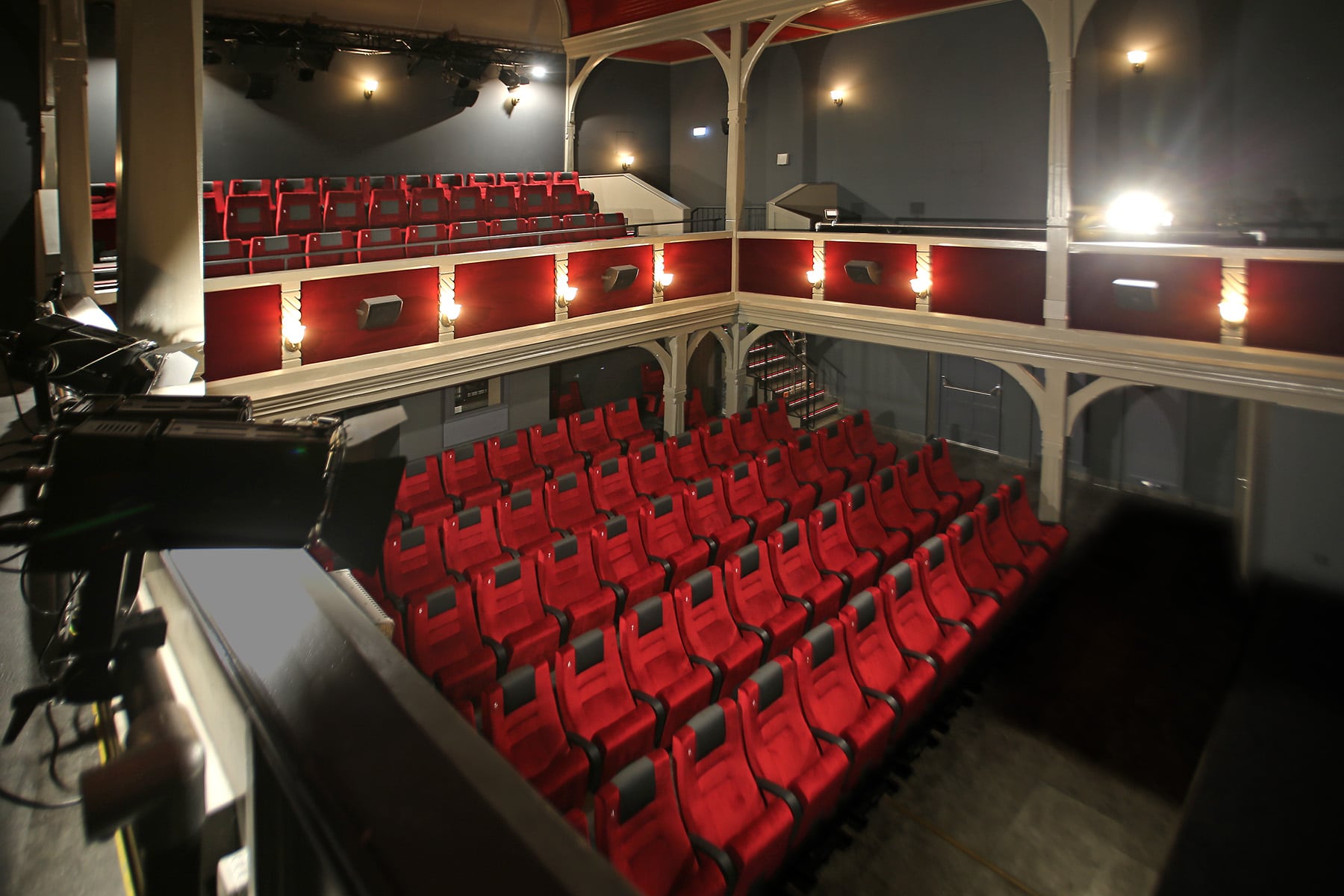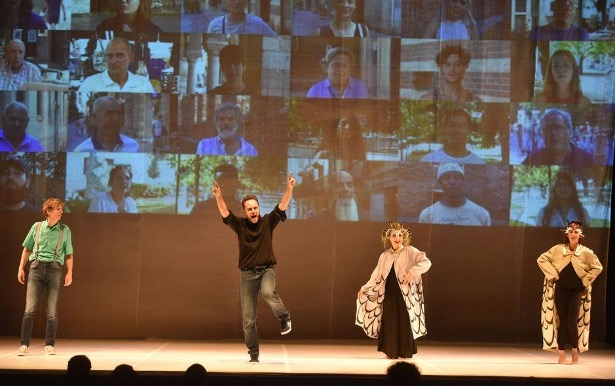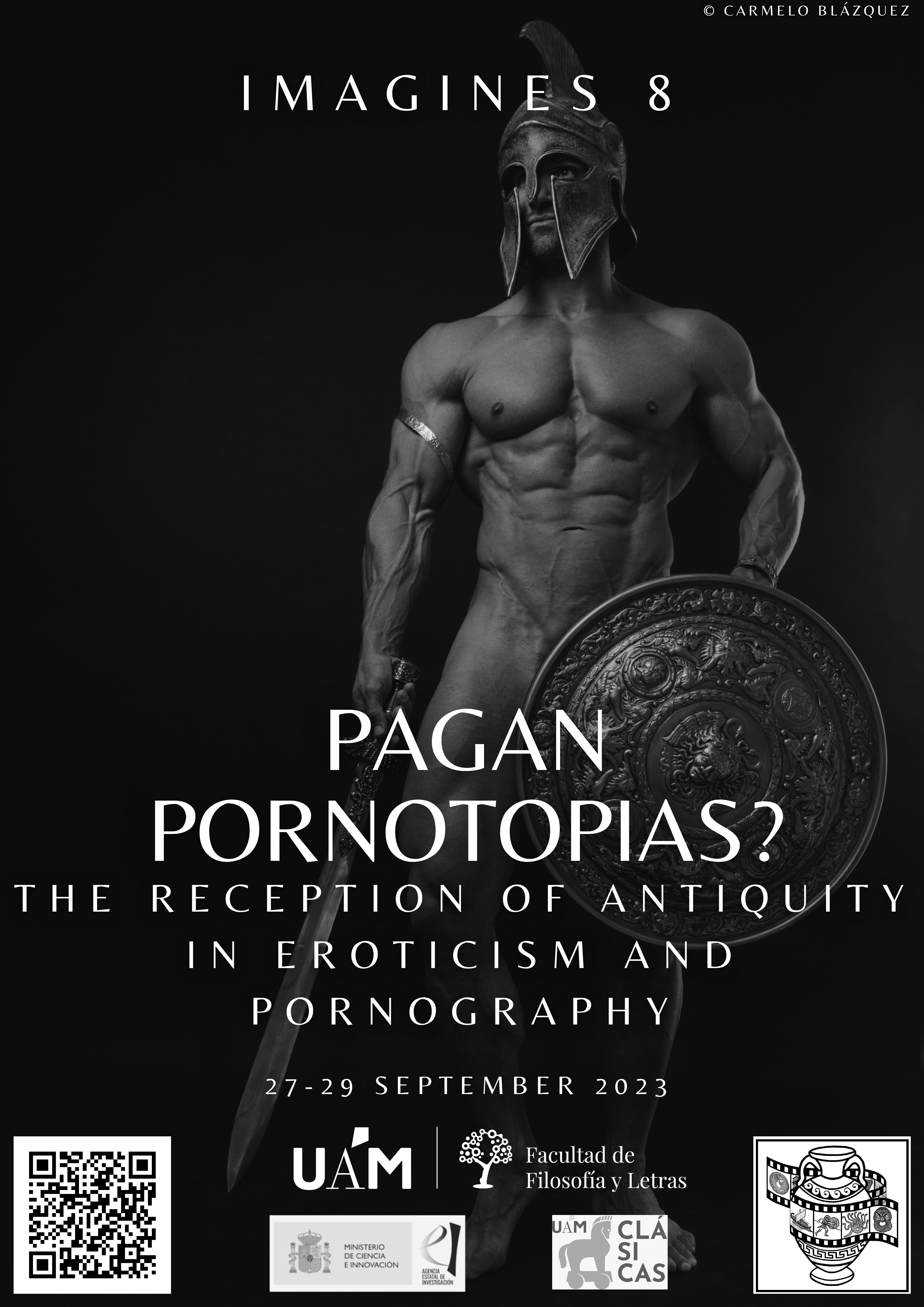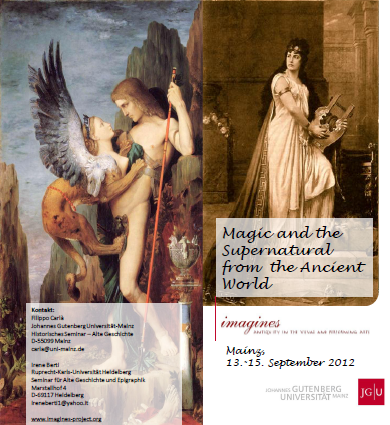
Imagines III
Ancient Magic and the Supernatural From the Ancient Wolrd
Mainz, September 13-15, 2012
-
About
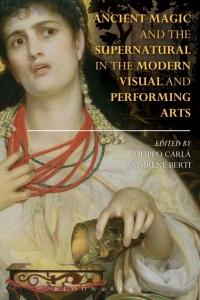 To what extent did mythological figures such as Circe and Medea influence the representation of the p owerful ‘oriental’ enchantress in modern European art? What role did the ancient gods and her oes play in the construction of the imaginary worlds of the modern fantasy genre? What is the role of undead creatures like zombies, animated skeletons and vampires in mythological films? The heroes, gods, demons and powerful enchantresses of the ancient world always played a prominent role in the post-Classical imagination. Similarly, the great adventures and famous love affairs of ancient Greek and Roman gods and mortals have influenced the reception of Classical culture and still feature prominently in the modern conception of antiquity. For centuries the revival, reconstruction and adaptation of ancient myths and religion in the arts have provided the backdrop for the exploration of and debate about contemporary fears, hopes and ideals. The ancient myth of the Amazons inspired e.g. the popular comic figure Wonder Woman, showcasing the aspiration for a un iverse free from violence, in which women’s values of the post-World War II era succeed in creating the utopia of a better world. In contrast, the theme of magic in the myth of Medea has often been used as symbol for cultural and political strangeness, highlighting the threat posed by those external elements which do not fit into the ordered world of civilized laws and customs. In Mainz we will discuss the interaction and influences of ancient models with and on modern mentalities and ideologies in the visual and performing arts.
To what extent did mythological figures such as Circe and Medea influence the representation of the p owerful ‘oriental’ enchantress in modern European art? What role did the ancient gods and her oes play in the construction of the imaginary worlds of the modern fantasy genre? What is the role of undead creatures like zombies, animated skeletons and vampires in mythological films? The heroes, gods, demons and powerful enchantresses of the ancient world always played a prominent role in the post-Classical imagination. Similarly, the great adventures and famous love affairs of ancient Greek and Roman gods and mortals have influenced the reception of Classical culture and still feature prominently in the modern conception of antiquity. For centuries the revival, reconstruction and adaptation of ancient myths and religion in the arts have provided the backdrop for the exploration of and debate about contemporary fears, hopes and ideals. The ancient myth of the Amazons inspired e.g. the popular comic figure Wonder Woman, showcasing the aspiration for a un iverse free from violence, in which women’s values of the post-World War II era succeed in creating the utopia of a better world. In contrast, the theme of magic in the myth of Medea has often been used as symbol for cultural and political strangeness, highlighting the threat posed by those external elements which do not fit into the ordered world of civilized laws and customs. In Mainz we will discuss the interaction and influences of ancient models with and on modern mentalities and ideologies in the visual and performing arts. -
Programme
Donnerstag, 13. September 2012
Philosophicum, Raum P2
Magic in Antiquity, Magic of Antiquity
14.00 Grußwort: Dekanin des Fachbereichs 07
Frau Univ.-Prof. Dr. Doris Prechel
14.10 Begrüßung: Filippo Carlà (Mainz) – Irene Berti (Heidelberg)
14.20 Lorna Hardwick (Open University): Imaging Magic, Imaging Thinking: the Representation of Epistemologies and their Reception
14.50 Domitilla Campanile (Pisa): Celtic Magic and Rituals in “The War Lord” (F. Schaffner, 1965)
15.20 Diskussion
15.40 Pause
16.10 Christine Walde (Mainz): Canidia und Erichtho und ihr nachantikes Leben in Bildern
16.40 Dagmar Hofmann (Köln): Phoenix und Kentauren – Die mythischen Tierwesen in der Harry-Potter-Heptalogie
17.10 Diskussion
17.30 Pause
18.00 Holger Kieburg (Antike Welt, Darmstadt):
Die Vermittlung von altertumswissenschaftlichen Forschungsergebnissen
18.15 Abendvortrag:
Stephan Seidel (Staatstheater Mainz):
Phädra-Daedalus-etcetera. Beschäftigung mit Mythen in meiner Theaterarbeit
Freitag, 14. September 2012
Naturwissenschaftliche Fakultät,
Alter Senatssaal
The power of the sorceress: evil women from Antiquity
9.00 Silke Knippschild (Bristol): The Evil Foreign Sorceress: the Representation of Powerful Women of the “Orient” in Early Modern Europe
9.30 Martina Treu – Giovanna Rocca (IULM Milano): Witch, Sorceress, Enchantress: Magic and Women from the Ancient World to the Present Time
10.00 Pepa Castillo (Logroño): Kirke diva. Die Rezeption von Kirke in der Barock-Oper (17. Jh.)
10.30 Diskussion
10.50 Pause
11.20 Jesús Carruesco – Montserrat Reig (Barcelona):
Medea in Modern Opera and Ballet: from Barber to Reimann.
11.50 Adeline Grand-Clément (Toulouse) – Charlotte Ribeyrol (Paris IV): Colchidian pharmaka: the Colours of Medea in 19th Century French and English Painting
12.20 Jovita Dikmonienė (Vilnius): Supernatural and Natural Powers of Strong Women: Antigone and Medea in Antiquity and in the Contemporary Performances of Lithuanian Theatres.
12.50 Diskussion
13.10 Mittagessen
Men, Gods, Heroes: Powers and Superpowers
14.00 Maria G. Castello – Carla Scilabra (Torino):
Theoi becoming kami. Classical Mythology in the
Anime World
14.30 Adriana Freire Nogueira (Algarve): Hercules between Magic and Reality
15.00 Borja Antela-Bernárdez (Barcelona): Doom Archaeology: Artifacts, Zombies and Supernatural Forces
15.30 Diskussion
15.50 Pause
16.20 Marion Gindhart – Andreas Gietzen (Mainz): Projekt(ion) Wonder Woman – Metamorphosen einer Superheldin
16.50 Pilar Iguácel de la Cruz (Logroño): Cassandra in Hispanic Literature
17.20 Diskussion
17.40 Pause
18.15 Abendvortrag:
Jürgen Blänsdorf (Mainz):
Götter und Dämonen in Text, Bild und Symbol in den Verfluchungsinschriften des Nymphaeums der Anna Perenna in Rom
20.30 Abendessen
Samstag, 15. September 2012
Naturwissenschaftliche Fakultät,
Alter Senatssaal
Talking to the Dead
9.30 Pauline Hanesworth (Lampeter): Hades, His Hound and His Home: Imag(in)ing the Greek Underworld in the Percy Jackson Universe
10.00 Martin Lindner (Göttingen): Ancient Horrors – Cinematic Antiquity and the Undead
10.30 Diskussion
10.50 Pause
Religion and Power
11.20 Martijn Icks (Düsseldorf): The Depraved Devotion of Elagabalus. Images of the Priest-Emperor in the Visual and Performing Arts
11.50 Andreas Goltz (Mainz): Gott ist Licht und Musik – zur Darstellung des christlichen Übernatürlichen im Antikfilm
12.20 Anja Wieber (Dortmund): Women and Religion in Epic Films: the 50ies’ Advocate for Christian Conversion and Today’s Pillar of Paganism
12.50 Diskussion
15.30 Besuch der Überreste des Isis- und Magna Mater-Heiligtums in Mainz (Peter Bibinger, Mainz)
-
Events
The playwright Stephan Seidel (Staatstheater Mainz) presents his work in Imagines III – Magic and the Supernatural, Sept. 2012.
The playwright and director spoke in Mainz about the connections between his work and ancient myth and how this aspect is reflected in the staging of his plays.
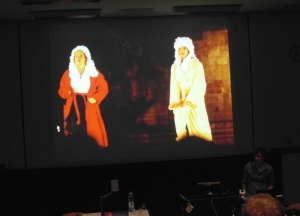 On the process of creation and on the sources that have inspired him the author explained that they can emerge from two opposite directions: “they can either grow from a simple street observation and develop into a myth (like in “Pygmalion”) or be born as a myth (“Phaedra”) that is later reworked and reshaped as a modern textual and visual narrative”.
On the process of creation and on the sources that have inspired him the author explained that they can emerge from two opposite directions: “they can either grow from a simple street observation and develop into a myth (like in “Pygmalion”) or be born as a myth (“Phaedra”) that is later reworked and reshaped as a modern textual and visual narrative”.A further relevant characteristic in Seidel’s work is the association between a particular place and/or its history and the topic and other elements of the play. Examples of such choices are the location of the Open-Air staging “Ophelias Teich” (Ophelia’s Pond) before the impressive façade of the famous IG-Farben Building in Frankfurt – that hosted the monopoly of chemical production, among them the Zyklon B gas, during the National Socialist era – , as well as the election of the Harbour of Mainz as the setting for the theatre adaptation of the 2000 film “Shadow of the Vampire” during the Festival of Young Talents.
Particular attention was drawn during the talk upon Seidel’s reworking of Phaedra’s myth in his play “Deine Liebe ist vielleicht tragischer als meine, aber nicht deinTod“ (Your Love is Perhaps More Tragic than my Love, yet Your Death is Not) after Jean Racine. He explained to the audience how he reads the characters of the play and the world they live in and how these aspects are transferred into the Physis of the actors on stage, into their relationships, and how they are recreated within a given space and music. The conceptions of love and the impossibility of love at different levels are key themes in Seidel’s reinterpretation and adaptation of Phaedra. Examples of this are the role played by Aricia in both Hippolytus’ and Theseus’ world as well as Hippolytus’ death as a consequence of a sort of escapism or Realitätsverdrängung.
Seidel is currently working on an adaptation of Medea’s myth: “Medea’s Erbe”.
-
Conference Report
One man’s magic is another man’s religion.
Between September 13th and 15th 2012, the University of Mainz hosted the third international conference: Imagines – Antiquity in the visual and performing arts. This year’s conference was devoted to the subject: Magic and the Supernatural from the ancient world.
 The conference explored the reception and the restaging of ancient myth and religious and magical practices in different cultural contexts and genres. The variety of topics explored included the re-interpretation of ancient gods and heroes in modern Japanese comics, the use of magical creatures from the ancient past in Harry Potter’s book- and film-series, and the representation of pagan religion in Christian films of the fifties. The conference also examined the afterlife of famous ancient sorceresses such as Circe and Medea, as well as lesser known witches such as Canidia and Erichtho, in modern art.
The conference explored the reception and the restaging of ancient myth and religious and magical practices in different cultural contexts and genres. The variety of topics explored included the re-interpretation of ancient gods and heroes in modern Japanese comics, the use of magical creatures from the ancient past in Harry Potter’s book- and film-series, and the representation of pagan religion in Christian films of the fifties. The conference also examined the afterlife of famous ancient sorceresses such as Circe and Medea, as well as lesser known witches such as Canidia and Erichtho, in modern art.Magic and the Supernatural was articulated in five panels, each dedicated to a different aspect of the reception of ancient magic and supernatural: “Magic in Antiquity, Magic of Antiquity”; “The Power of the Sorceresses: Evil Women from Antiquity”; “Men, Gods, Heroes: Powers and Superpowers”; “Talking to the Death”; and “Religion and Power”. These approaches underlined and discussed the interconnections and mutual influences between different genres (e.g. between film and comics; between painting, theatre and opera) and the ways in which they reuse and reshape ancient references and models. Each panel further demonstrated synergies between traditional art disciplines and modern forms of “popular culture”, such as horror movies, fantasy literature and cartoons.
The papers explored the two sides of communication involved in any adaptation and appropriation of ancient themes. On the one hand they looked at the representation of ancient motives and themes as modern messages sent to audiences, viewers and readers. On the other hand, they paid attention to the reactions of the receivers of such messages within a specific (and new) cultural horizon. The examination of this phenomenon is essential for understanding the shifting and changing dynamics in the modern receptions of ancient ideals, symbols and figures (e.g the characterisations of Medea and Circe shifting between evil women and helpful magicians).
The variety of themes and examples as well as the interdisciplinary approaches adopted by the participants showed to what extent ancient religious beliefs continue to fascinate and attract the public of today. Their enormous influence in modern collective imaginations is exemplified by their elevation (or reduction) to symbols that attempt to embody the idea of Antiquity (as exemplified by concepts such as pagan, magic, pre-Christian or anti-Christian antiquity). A further theme of the conference was the use of ancient religion and magic to oppose modernity. Papers explored how receptions would situate the world of ancient religion and magic as a place to escape from the present, as a universe that encapsulates the “perfect other” and as a foil by which their own religious identification – especially Christian – could be explored.
Two open lectures highlighted the conference: Professor Jürgen Blänsdorf (Mainz) presented a survey of ancient Latin curses (defixiones) and illustrated the rituals of ancient dark magic. Stephan Seidel, young playwright and stage director at the Opera Theater of Mainz, explained his approach to ancient myth in his works.
-
Organisers
Coordinators:JProf. Dr. Filippo CarlàDr. Irene Berti Institutions:
